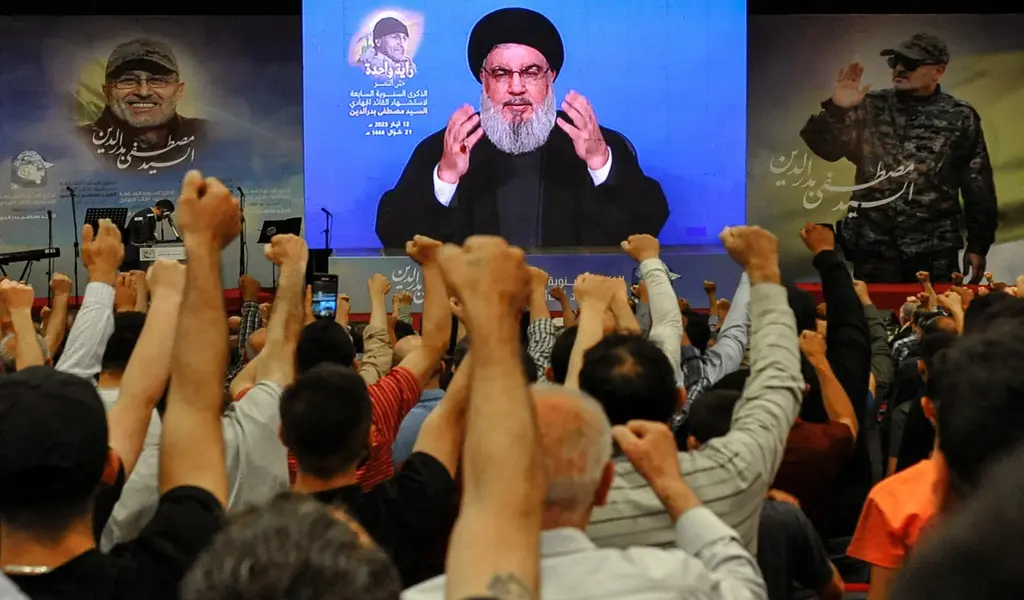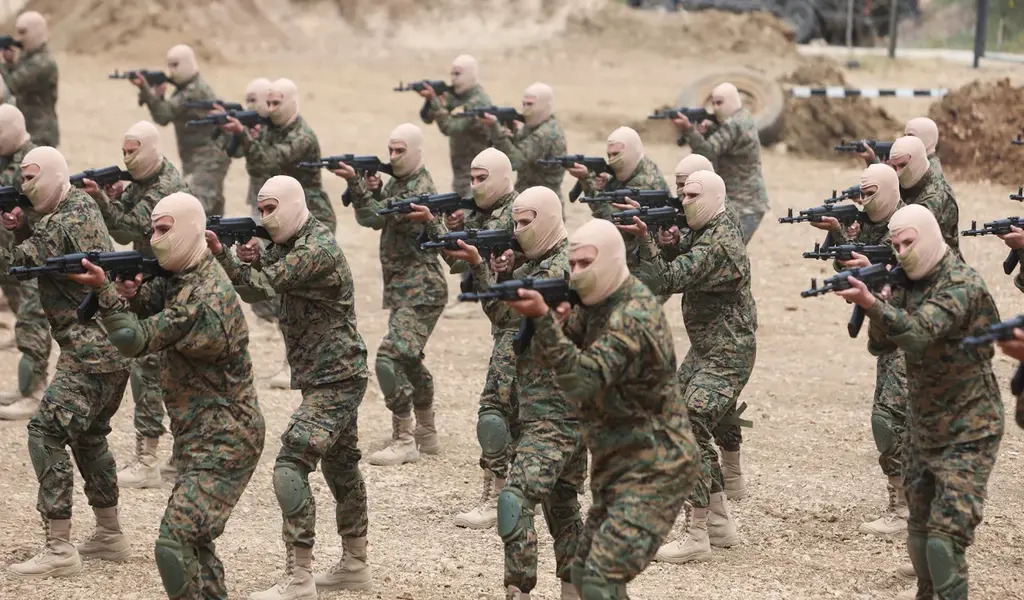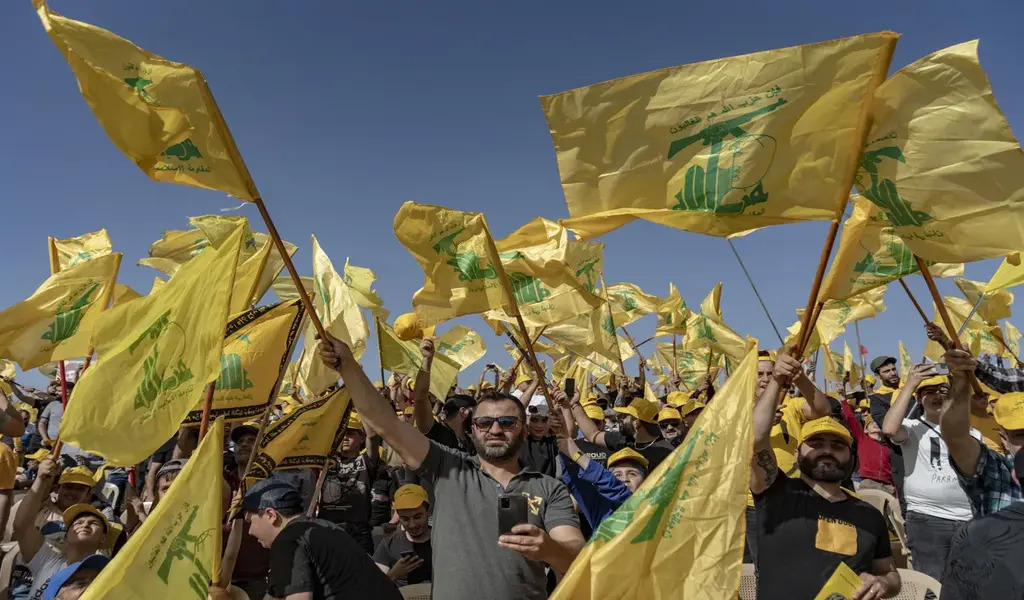(CTN NEWS) – Hezbollah is an Iran-backed Islamist organization known for having one of the most powerful paramilitary forces in the Middle East.
It is primarily based in the region along the Israel-Lebanon border.
The presence and activities of Hezbollah have the potential to significantly impact the ongoing conflict between Hamas and Israel and could even escalate into a broader regional conflict.
It’s essential to understand that Hezbollah’s involvement in regional conflicts has far-reaching implications, and its actions often contribute to the complexity of the Middle East situation.
The Origins Of Hezbollah
Hezbollah’s origins trace back to the aftermath of Israel’s invasion of Lebanon in 1982, during which Israeli forces seized nearly half of Lebanon’s territory, including the capital, Beirut.
In the course of this invasion, Israeli forces, in collaboration with right-wing, Israel-aligned Christian Lebanese militias, imposed a siege on the western part of Beirut with the aim of expelling Palestinian militants.
This military operation resulted in a devastating toll, with reports from that era indicating more than 17,000 casualties.
It also brought to light one of the darkest chapters in the region’s history: the massacre at the Beirut refugee camp of Sabra and Shatila, an event of significant bloodshed.
The Kahan Commission of Inquiry, established by Israel, indirectly held Israel accountable for the massacre, which was executed by right-wing Christian Lebanese combatants.
Estimates of the death toll at Sabra and Shatila vary considerably, ranging from 700 to 3,000, underscoring the profound tragedy and the complex historical context surrounding this harrowing incident.
Following the departure of numerous Palestinian fighters from Lebanon, a cadre of Shia Islamist combatants, who had received training and support from the emerging Islamic Republic of Iran, swiftly emerged on the complex political landscape of Lebanon.
This relatively ad hoc group of fighters left an indelible, albeit turbulent, mark.
In 1983, two suicide bombers affiliated with this faction carried out a devastating attack on a U.S. Marine barracks in Beirut, resulting in the tragic deaths of nearly 300 U.S. and French military personnel, as well as several civilians.
Just a year later, in 1984, fighters with links to Iran orchestrated a bombing at the U.S. Embassy in Beirut, claiming the lives of 23 individuals.
In 1985, these militants began to consolidate into a more structured entity, giving birth to the organization known as Hezbollah.
Hezbollah made no secret of its deep-rooted ideological alignment with Tehran, and it benefited from a consistent influx of financial support from the Islamic Republic.
This substantial backing played a pivotal role in elevating Hezbollah’s status in the region.
The organization actively engaged in Lebanon’s civil war, which reached its conclusion in 1990, and later spearheaded a campaign against Israeli forces that had occupied southern Lebanon.
This prolonged struggle ultimately led to the withdrawal of Israeli forces from the region in the year 2000.
A Terror Designation
In Lebanon, Hezbollah is officially recognized as a “resistance” group, tasked with countering Israel, which Beirut categorizes as an adversary.
However, in much of the Western world, Hezbollah carries the label of a terrorist organization.
This designation largely stems from events such as Argentina’s accusation that Hezbollah was responsible for the 1992 attack on the Israeli Embassy in Buenos Aires, resulting in the loss of 29 lives, as well as the 1994 bombing of a Jewish community center in the same city, which claimed 85 lives.
Both Iran and Hezbollah vehemently denied any involvement in these attacks.
The year 2011 marked a turning point when the pro-democracy Arab Spring protests cascaded into a series of proxy wars that engulfed much of the Middle East.
Hezbollah became an active participant, joining the ranks of Iran-aligned forces in conflicts across Syria and Iraq.
Subsequently, several Arab nations also designated it as a terrorist organization.
However, these designations did little to diminish Hezbollah’s influence.
Throughout the extended proxy conflicts, the group experienced a meteoric ascent, transitioning from a guerrilla insurgency into a formidable regional fighting force, further complicating the geopolitical dynamics of the Middle East.
How Hezbollah Relates To Hamas
Hezbollah and Hamas have had periods of discord in their history.
They found themselves on opposing sides during Syria’s uprising-turned-civil war.
Hezbollah supported Syrian dictator Bashar al-Assad, while Hamas militants backed the predominantly Sunni opposition.
It’s important to note that Hezbollah is rooted in the Shia branch of Islam, while Hamas follows the Sunni tradition.
As the Syrian conflict waned in most regions towards the end of the last decade, Hamas and Hezbollah chose to put their differences aside.
Hezbollah’s leader, Hassan Nasrallah, has openly lauded the strengthening alliance between the two organizations.
Hamas’s leadership has engaged in multiple meetings with Nasrallah over the past year, and it’s widely recognized that Hamas has established deeper connections with Tehran.
A Growing Regional Power At Home
While Hezbollah was engaged in battles in distant lands, problems began to brew in their homeland, Lebanon.
Recurrent cycles of economic and political crises over the past two decades have eroded the group’s popularity beyond its core Shia support base.
Hezbollah found itself entangled in broader economic challenges it couldn’t effectively address.
It also acted as a bulwark against Lebanese protests that were demanding reform from a political elite widely accused of corruption.
The group even dispatched its supporters to confront peaceful demonstrators.
Furthermore, Hezbollah has managed to largely thwart a judicial investigation into the catastrophic explosion at the Beirut port in August 2020, which caused extensive devastation in the city.
Nonetheless, these challenges may not significantly deter Hezbollah from pursuing its objectives.
The organization remains arguably Iran’s most potent non-state ally.
As its regional influence continues to expand, it could emerge as an even more formidable adversary to its long-standing foe, Israel.
Why Hezbollah Could Become The Embroiled In The Israel-Hamas War
Hezbollah is indeed a complex and powerful entity with a history of conflict with Israel.
While it shares a common goal with Hamas of opposing Israel, it’s unclear whether Hezbollah will actively intervene in the Hamas-Israel war.
The reasons for this uncertainty are multifaceted.
Hezbollah recognizes the significant military strength of the Israeli armed forces, which are supported by advanced weaponry and equipment, much of it provided by the United States.
Additionally, Israel’s recent response to hostilities in Gaza has resulted in a substantial loss of life, potentially serving as a deterrent for further conflict.
Another factor to consider is that a war with Hezbollah in Israel’s north could lead to a third front, potentially involving the Israeli-occupied Golan Heights.
This region separates Israel from Iran-aligned forces, including the Islamic Revolutionary Guard Corps, a formidable wing of the Iranian military.
While Hezbollah’s arsenal may not match Israel’s in terms of overall capability, it does possess precision-guided missiles, which are significantly more advanced than the outdated Soviet-era rockets they used in their last conflict with Israel in 2006.
Hezbollah’s leader, Hassan Nasrallah, claims that the group consists of over 100,000 personnel, encompassing both active fighters and reservists.
Should Hezbollah become involved in the ongoing conflict, it would create a multifront war, introducing a high level of unpredictability and potentially pushing the Middle East into uncharted territory with uncertain consequences.
MORE RELATED NEWS:
US rejects Israel-Gaza ceasefire as Hamas released 2 female hostages
Gold Price Today, October. 24th, 2023 – TUESDAY
LEGEND LOST: Veteran Indian Spinner Bishan Singh Bedi Died at the age of 77









